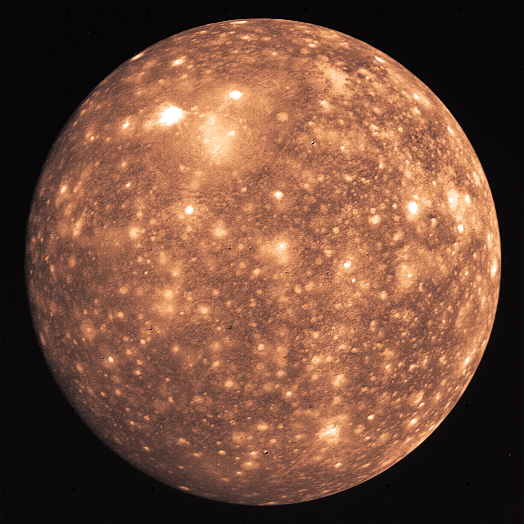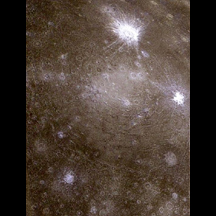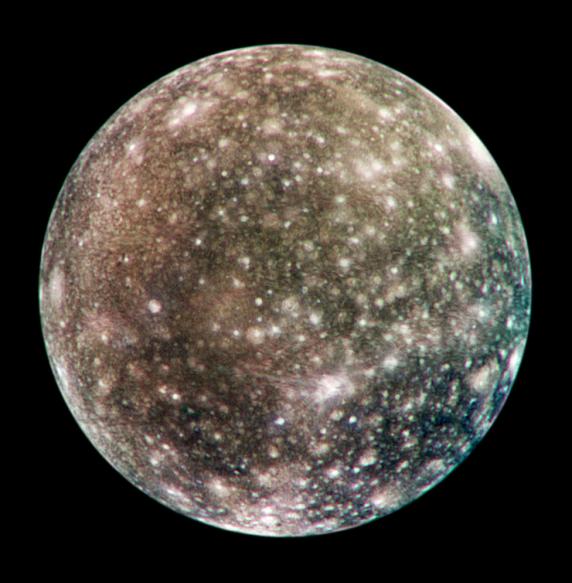
Jupiter's moon Callisto [cal-ISS-tow] is the second largest of Jupiter's moons (next to Ganymede) and the third largest in the solar system. It is larger than Earth's Moon, but smaller than planet Mercury. Callisto is about 40% ice and 60% rock/iron. Scientists speculate that Callisto might even have a liquid ocean under the surface. Callisto has the oldest, most cratered surface of any body yet observed in the solar system.
Image by the Voyager 2 spacecraft.

A portion of the central zone of the large impact structure Valhalla on Jupiter's moon Callisto.
Image by the Galileo spacecraft.

This false colored image of Callisto's surface shows how cratered it is. Bright scars on a darker surface show Callisto's long history of impacts.
Image by the Galileo spacecraft.

